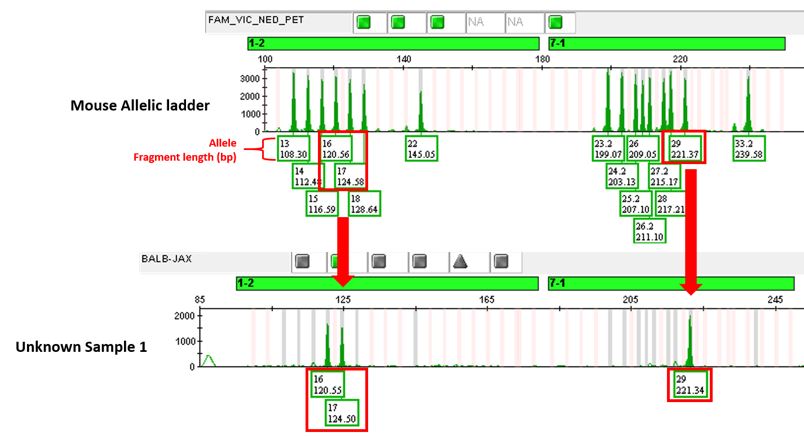Summary
The NIST led Mouse Cell Line Authentication Consortium has worked together to validate the method for STR genotyping of mouse cell lines. An STR-targeted multiplex PCR assay has been validated, a public database prepared for mouse STR profiles, and there is public interest in offering mouse cell line authentication services.
What is lacking is a measurement tool for accurate allele call determination. Highly characterized calibration samples were distributed for allele call accuracy for the Mouse Cell Line Authentication Consortium interlaboratory study; however, these materials are not renewable. NIST is developing a mouse allelic ladder reference material that can be used to streamline allele calling across laboratories.
Description
What is an allelic ladder?
An allelic ladder is a mixture of highly characterized alleles (known size and sequence) that are generated using the same primers as the test samples and are used during capillary electrophoresis for accurate allele call determination.
Why is an allelic ladder important?
Capillary electrophoresis (CE) separates ions based on their electrophoretic mobility. DNA fragments separated by fragment length and single-base resolution can be obtained on fragments up to several hundred base pairs. An allelic ladder is needed for each CE run to determine accurate allele calls because fragment length varies between instruments depending on the different types of polymers and arrays that are used.
Development of a NIST Reference Material
NIST, in collaboration with ATCC, developed over one hundred plasmids that individually contain a single allele. The plasmids were purified and sequenced to confirm the repeat region was correct. The alleles in these plasmids were amplified using the mouse multiplex PCR assay that targets eighteen mouse STR markers. The PCR products were pooled together and the ratios balanced to obtain a normalized peak height among each dye channel.
This material is currently being tested in a NIST-led interlaboratory study made up of seven laboratories to determine if the allelic ladder prototype is fit-for-purpose. Stability studies are also ongoing to determine the optimal storage conditions for the material.


